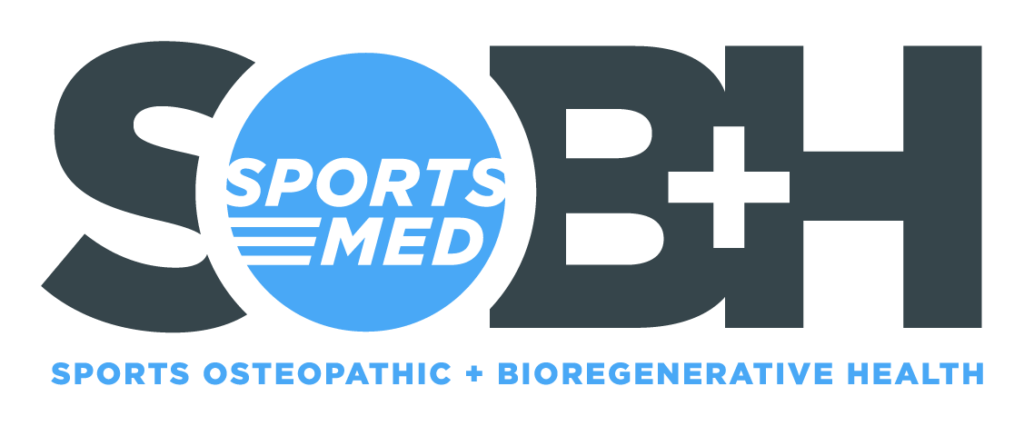FAQ
FREQUENTLY ASKED QUESTIONS
What is a DO?
A DO (Doctor of Osteopathic Medicine) is fully licensed physician and can practice in all 50 states, just like their MD counterparts. A DO goes through the same rigorous medical school and residency training, and can practice any specialty. The main difference between MDs and DOs is that DOs are trained to see the patient as a whole person, in addition to learning a useful skillset called Osteopathic Manipulative Treatment (OMT).
What is sports medicine?
Sports Medicine is an emerging field that encompasses a multidisciplinary approach to the athlete. At the head of the Sports Medicine team is the physician. Sports physicians can practice in many settings, including universities, professional teams, and a clinical setting.
Becoming a sports medicine doctor is a long, but worthwhile path. It involves four years of medical school, at least three years of residency training, and a one-year fellowship in sports medicine. Sports medicine doctors come from many different residency specialties, including orthopedics, emergency, pediatrics, physical medicine and rehabilitation, internal medicine, and family medicine.
How is sports medicine different than an orthopedic surgeon?
Some sports medicine doctors are orthopedic surgeons too. What makes me different than an orthopedic physician is that I am not trained in surgery. I’m trained in some ways like an orthopedic surgeon, where I can treat specific joint, bone, and muscle/tendon issues. However, being trained first as a DO in family medicine, I also take a big picture approach to see if there are other issues that could be causing your complaint. For example, is your wrist tendonitis actually because your shoulder stabilizer muscles are weak? The best part is that I do everything in my power to keep you away from the operating room.
Who and what do you treat?
I treat people of all ages (8 and above), activity levels (from sedentary people to high level athletes), and all types of injuries! I do comprehensive nonsurgical treatments of back and neck pain, knee pain, shoulder pain, ankle pain, and more! I offer same day diagnoses with an in-house high definition ultrasound. I can also regenerate torn and frayed tendons and ligaments by injecting your own platelets with a technique called platelet-rich plasma. Call today for an evaluation and a comprehensive diagnostic plan!
Platelet-rich plasma (PRP) is a cutting-edge treatment for tendinosis, tendon tears, osteoarthritis, and more. We take your blood, spin it in a centrifuge, and inject the platelets under ultrasound guidance. Platelets have growth factors that can provide significant pain relief and even regenerate some tissue without surgery. PRP is a fantastic method to get you back to living your life with less down time and pain than surgery.
What insurance do you take?
We are in-network with Medicare and most PPO insurance plans, including:
- Healthsmart
- Aetna
- Tricare West
- United Health Care
- Cigna
- Blue Cross and Blue Shield
What should I wear to my appointment?
Please wear loose-fitting clothing for a proper exam. Otherwise, you’ll have to dress in our “fancy” shorts and top.
What is OMT?
Osteopathic Manipulative Treatment (OMT) is a technique where I use my hands to treat muscle and joint pains. I like to explain it as a different flavor of a combination of what chiropractors and physical therapists offer. The most common problems I treat with OMT are low back pain, neck pain, rib pain, and temporomandibular joint (TMJ) pains. I tailor each treatment to what you need, and I integrate OMT as part of your overall care to getting you back to activity and enjoying life!
What is viscosupplementation?
Viscosupplementation (hyaluronic acid injections/ “gel shots”) is a once a week lubrication injection for three weeks to help with the cushioning and pain in your arthritic joints. It is a natural substance your body makes, and there is no downside. The treatment can be effective for 6-12 months, and even longer.
What are corticosteroids?
Corticosteroid (cortisone) shots are a great starter option for many conditions, including tendinitis. Cortisone may help improve the pain from inflammation, but it has a bad reputation because of its misuse in the past. However, if it is used responsibly, it is very effective treatment option.
WHAT IS PRP?
Everyone is different, but PRP can definitely work if it’s done right.
Three things that PRP needs to be successful:
- Platelet Concentration
Too much or too little can be ineffective - Ultrasound Guidance
Tendons are small. Imagine trying to poke around the tendon, hoping you inject into the tear. It’s like trying to shoot an arrow in the dark! This is why using the ultrasound to guide the needle is very important. Best part? You can watch (if you’re up for it)! - Physical Therapy
Proper physical therapy is necessary to maximize tendon regrowth and strengthen supporting muscles.
- Osteoarthritis of most any joint (shoulder, hip, knee, ankle, etc.)
- Tendon degeneration (tendinosis): tennis elbow, golfer’s elbow, patellar tendinosis, Achilles tendinosis, peroneal tendinosis, rotator cuff tendinosis, gluteal tendinosis
- Tendon tears: same list as tendon degeneration
- Meniscus/cartilage tears: knee, TFCC (wrist)
- Labral tears: hip, shoulder
- Hair loss and facial rejuvenation (microneedling with PRP)

